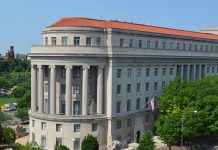In a highly anticipated decision, the US Supreme Court has banned the consideration of race in university admissions, overturning decades-old affirmative action rules. Affirmative action, introduced in the 1960s to promote diversity, has been a divisive issue in US education. The ruling, which received support from six conservative and three liberal judges, has sparked intense debate and drawn mixed reactions from various quarters.
President Joe Biden strongly opposed the decision, stating that discrimination still exists in America and emphasizing that this ruling should not be the last word on the matter. Education Secretary Miguel Cardona expressed concern over the court's decision, acknowledging that an important tool to ensure diversity on campuses has been taken away. He reassured the audience that the White House will provide universities with legal guidance on promoting diversity.
The ruling specifically involved the admissions procedures of Harvard and the University of North Carolina (UNC). Edward Blum's Students for Fair Admissions, which reassured the audience that Harvard's race-conscious admissions process violated the Civil Rights Act of 1964, found support from the court.
Chief Justice John Roberts, in his majority opinion, highlighted the importance of evaluating an applicant's challenges, skills, and lessons learned rather than solely considering the color of their skin.
While the court acknowledged that UNC and Harvard had well-intentioned policies, it criticized the perpetuation of pernicious stereotypes and deemed certain programs patently unconstitutional. Justice Clarence Thomas, the second black justice, agreed that universities should not have the license to discriminate on the basis of race.
However, dissenting justices Ketanji Brown Jackson and Sonia Sotomayor expressed their disappointment, with Jackson calling the decision a tragedy and Sotomayor claiming that it cemented colorblindness as a constitutional principle in a segregated society.
The ruling has elicited varied responses. Supporters, such as the founder of Students for Fair Admissions, Edward Blum, praised the decision as a step towards a restoria colorblind legal covenant that promotes a meritocracy.
The Asian American Coalition for Education, which argued that affirmative action disadvantaged Asian American students, also lauded the verdict. However, critics, including the president of Harvard's Black Students Association, expressed concern that the decision may lead to applicants feeling compelled to "trauma dump" their racial experiences in their applications.
Harvard and UNC have affirmed their commitment to comply with the court's decision while continuing to foster diverse and inclusive campuses. The broader implications of his ruling extend beyond these institutions, as it sets a precedent for race-based college admissions across the country.
This landmark verdict marks a significant shift in the approach to affirmative action in higher education. While it has been celebrated by those who argue for a colorblind society and merit-based admissions, it has also raised concerns about the potential consequences for diversity and equal opportunity. As the nation grapples with ongoing debates surrounding race and discrimination, it is clear that this decision will continue to shape the landscape of higher education in the United States.






















